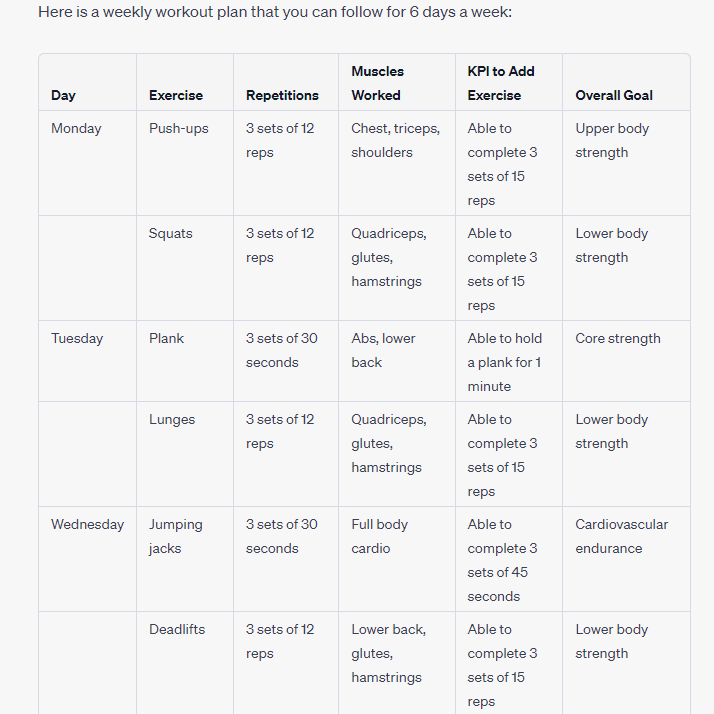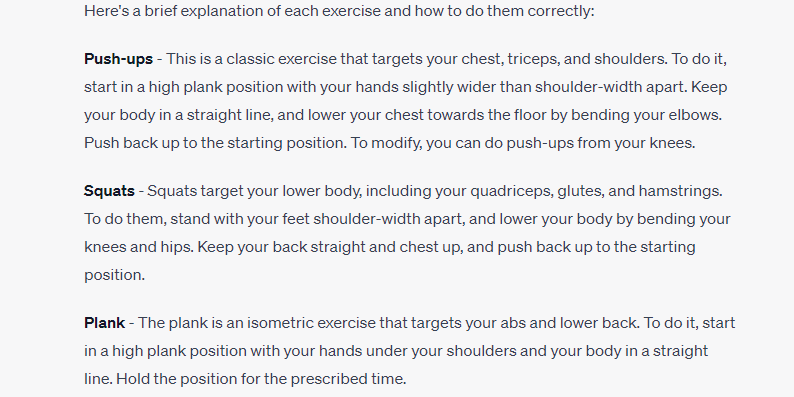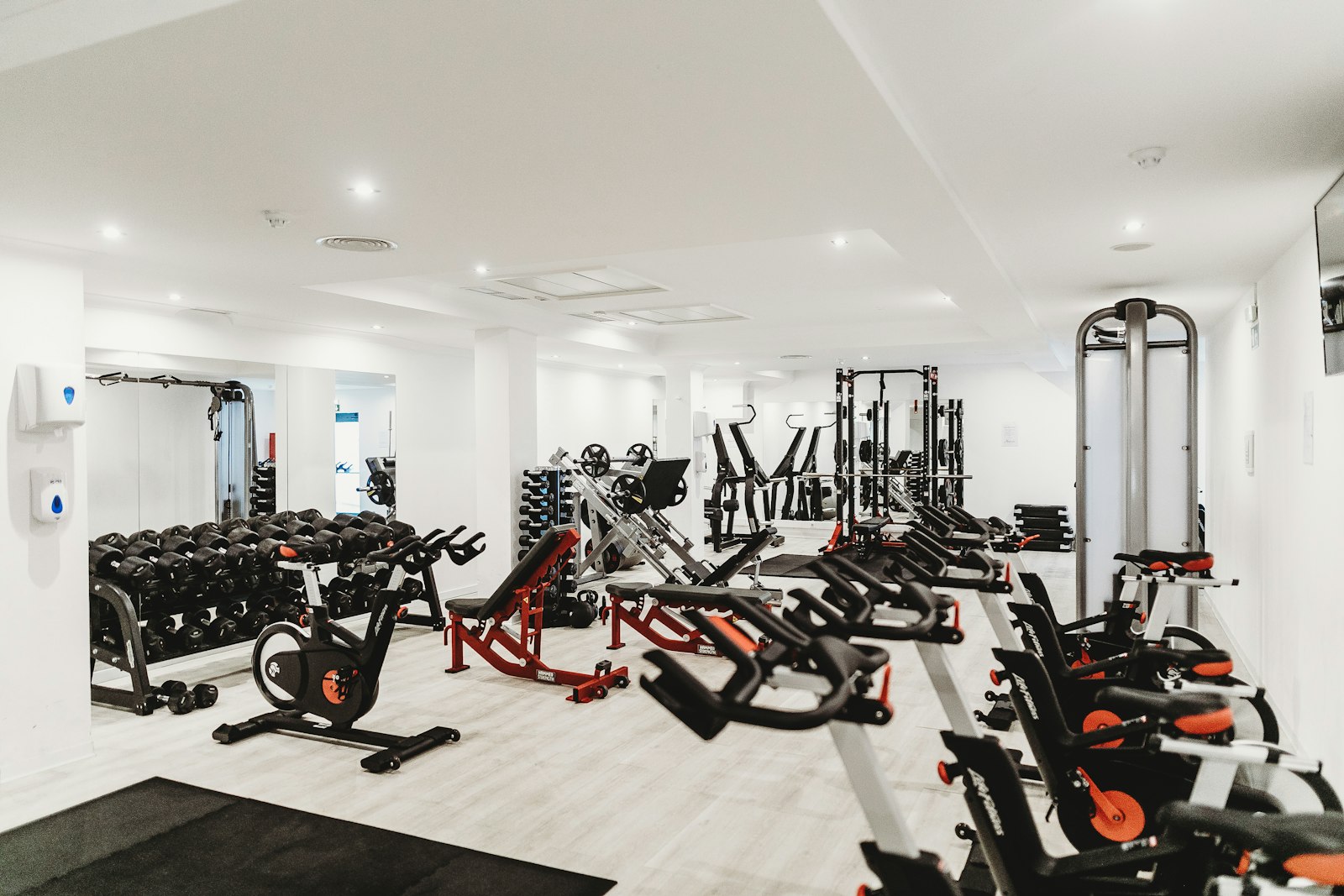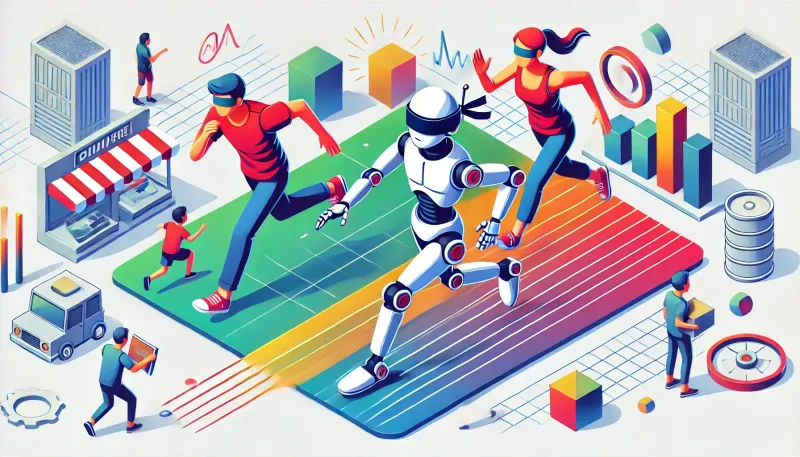Health and fitness have always been personal passions of mine. But as much as I love to sweat it out, designing my workout regimen can be a challenge. That's when I had an idea - why not combine my fascination with artificial intelligence with my love for fitness? The result was transforming ChatGPT into my personal calisthenics trainer, and I've never looked back. The purpose of this tutorial is to walk you through my journey of prompt engineering with ChatGPT, offering insights on how you can use this tool to meet your fitness goals too.
Join me in this guide to find out how I used AI to create a personalized training regimen and learn how you can do the same.
Understanding the Prompt
The journey begins with the prompt - a carefully crafted piece of instruction that directs the AI in a desired way. Let's deconstruct the one I used by breaking down the four-paragraph prompt:
"I want you to act like my calisthenics personal trainer. Your goal is to help me optimize building strength to promote a healthier lifestyle. The exercises you'll suggest will factor in my current fitness level, as well as the time between exercises."
In the first part, I'm telling ChatGPT to assume the role of a calisthenics personal trainer. Calisthenics is a specific form of exercise that primarily involves bodyweight workouts. It's ideal for at-home fitness routines and for people who prefer functional strength training.
The second part clarifies the goal for the AI – to help me build strength and promote a healthier lifestyle. This directive informs the AI that the focus should be on strength-building exercises, which may be different from other fitness goals like endurance training or flexibility.
"Currently, my goals are to reach 25% or less body fat percentage. My current body fat percentage is 29.5%. My secondary goal is to get a 6 pack within 6 months. I'm a female, height 5 feet 4.5 inches. I have an hour a day I can dedicate 6 days a week to the exercise. I'm interested in any type of cardio, with my favorite being mid-intensity long duration. I also deadlift 145 pounds and squat 120 pounds."
In this section, I am providing personal information and fitness goals. The AI uses these specifics to personalize the training regimen. The fact that I am a female of a particular height, with certain exercise preferences and time constraints, helps tailor the regimen more accurately.
Also included are my current strength levels (deadlift and squat weights), which provide a benchmark for the AI. This helps it suggest exercises that are challenging enough to build strength, yet doable given my current capabilities.
The beauty of this prompt is its flexibility. You can adjust any of these details to fit your health and fitness levels, and the AI will adjust its responses accordingly. The result is a tailored fitness program that can evolve with you, all made possible with a few tweaks to your prompt.
Defining the Response Format
"You will suggest exercises that I can do, step by step and in table format. The exercises listed in the table will be separated by days, the amount of repetitions I should do, muscles that will be exercised, KPIs I reach to be able to add another exercise to the list, and overall goal per category."
The format for the AI's response is just as important as the information provided in the prompt. In my case, I've asked for a table format, as it provides a clear, organized visual of the entire workout plan. By specifying this, I'm guiding the AI to present the exercises, their sequences, repetitions, involved muscles, and KPIs in a structured manner that's easy to follow.
I've also asked for KPIs or Key Performance Indicators to be included. These are important measures to track my progress, ensure that I'm reaching my fitness goals, and help me determine when I'm ready to increase the intensity or add new exercises to my regimen.
Lastly, by asking for the overall goal per category, I'm guiding the AI to keep my fitness objectives in mind when generating the workout schedule, which includes reaching a body fat percentage of 25% or less and developing a six-pack in six months.
"Underneath, I want you to create separate tables for each exercise, with an additional row per exercise to explain why the exercise you suggest is good for me, and another row to explain how to do the exercise in a step-by-step process."
This part of the prompt is an extension of the previous directive but focuses on each individual exercise. Here, I'm asking the AI to create a breakdown for every exercise that has been recommended, providing an explanation for its inclusion and detailed instructions on how to perform it correctly.
Through these additional tables, I ensure that the AI's training regimen doesn't just provide me with a list of exercises but also explains the reason behind each choice and offers comprehensive guidance on their execution.
Next, we will look at how ChatGPT responded to the prompt and how the resulting workout regimen fit into my fitness journey.

Role of Personal Information and Goals in a Training Regimen
Personal information and goals play a crucial role in creating a tailored training regimen. By knowing your current body fat percentage, fitness level, and specific goals (like getting a six-pack within six months), ChatGPT was able to suggest a workout routine that aligns with these goals. In traditional personal training, this information would be used to ensure the exercises and the progression are suitable for the client’s current fitness level and help them reach their objectives safely and effectively.
Importance of Exercise Preferences and Available Time
Exercise preferences are equally important as they increase the likelihood of adherence to the program. In this case, my preference for mid-intensity long-duration cardio and strength-based exercises was factored into the regimen. Available time is another crucial aspect to consider. Knowing that I have an hour a day, 6 days a week allowed ChatGPT to create a program that maximizes this time most efficiently.
Strength Benchmark
ChatGPT utilized the strength benchmarks (deadlift and squat numbers) I provided to gauge my strength level. This benchmark information assisted the AI in recommending exercises and repetitions that would challenge me, but not overtax my muscles and risk injury. For instance, the fact that I can deadlift 145 pounds and squat 120 pounds suggests that I have a solid strength base, and can handle exercises like push-ups, squats, and deadlifts.
Table of Suggested Exercises
Based on all this information, ChatGPT generated a table of suggested exercises, detailing the exercise name, repetitions, muscles worked, KPI for adding another exercise, and the overall goal. This organized format provides a clear overview of my weekly workout routine, which is easy to follow and refer back to.
To sum it up, ChatGPT has demonstrated the ability to generate a personalized training regimen that takes into account a variety of factors, including personal goals, fitness level, time availability, exercise preferences, and strength benchmarks. As AI technology advances, the scope and effectiveness of such capabilities will only increase.

Adapting the Approach to Different Fitness Levels and Goals
AI-generated workout plans are versatile and easily adaptable. By changing the input parameters, you can create a program that aligns with a different set of goals, fitness levels, or even a different exercise preference.
Goals
Fitness Levels
Exercise Preferences
Available Time
In summary, by altering the input parameters, you can effectively tailor the AI-generated workout plan to suit different goals, fitness levels, exercise preferences, and available time. This is an example of the power of AI in personalizing health and fitness recommendations, making it an accessible and versatile tool for anyone looking to improve their fitness.
Try it Yourself
Want to give prompt engineering your fitness a go? Here's a customizable version of the prompt used to generate a personalized workout routine:
Feel free to replace the blanks with your personal details and fitness goals. Remember, the more specific you are, the better the AI can tailor the plan to your needs.
What I've learned
Using AI like ChatGPT as a personal trainer opens up a realm of possibilities for fitness enthusiasts and beginners alike. By feeding it the right prompts, it can generate a personalized workout regimen catered to your unique needs and goals. However, remember that while AI can provide insightful suggestions, it's always important to listen to your body and consult with a health professional before starting any new fitness routine. Happy training!






